To Understand Zelda’s Future, Look to its Handheld Past
All the world's a dungeon
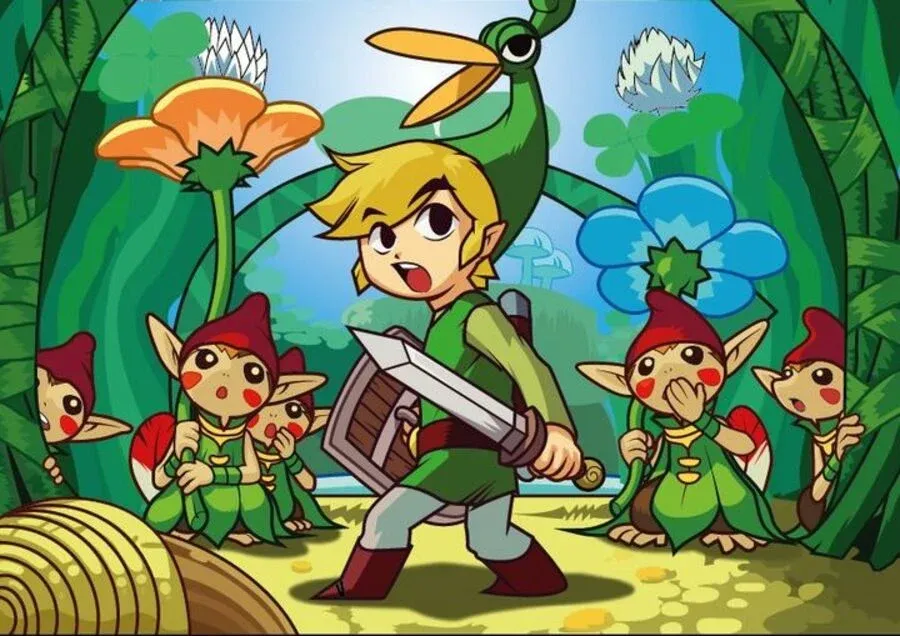
There is a mountain in a far corner of Hyrule. Link, intrepid and courageous and maybe underprepared, must climb it. Ascending to the top of the mountain will require all the skills that Link – and, by extension, you – have acquired in your adventure thus far. You’ll need to use your wits to interpret the signs the game is giving you, learning new facets of this dangerous world as you explore. Secret caves, devious environmental puzzles, and punishing tests of dexterity await.
Perhaps you thought of Tears Of The Kingdom’s hidden cave systems, tantalizing shrines, or challenging enemy encampments. But while writing that first paragraph, I was actually thinking of a different Zelda mountain: Mount Crenel, featured in the Game Boy Advance entry The Legend Of Zelda: The Minish Cap.
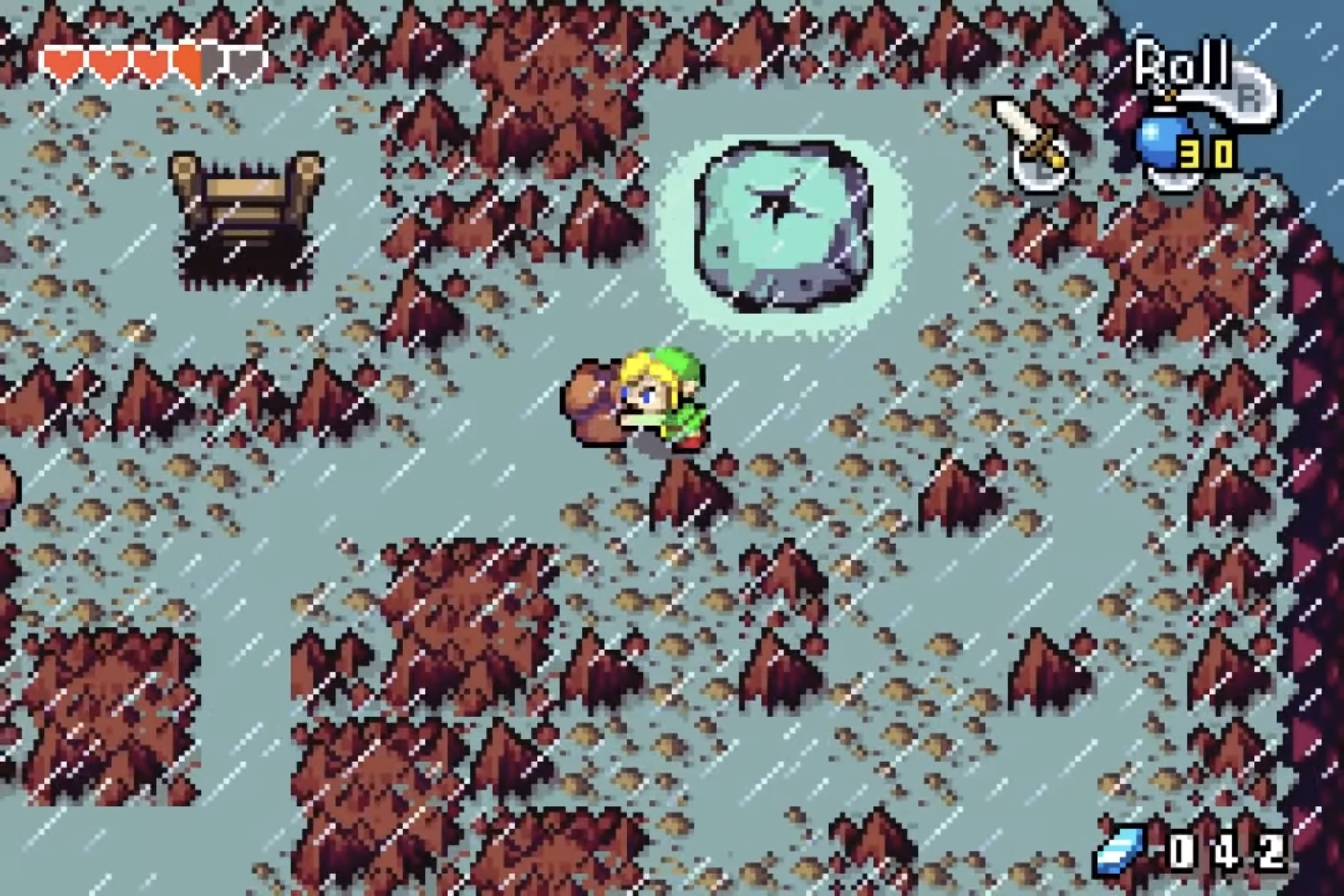
Often cited as “The Underappreciated One,” The Minish Cap is one of the worst-selling games in the Zelda series, thanks to a launch at the tail end of the GBA’s lifespan. But those who have played it praise its immaculate production values and immense charm – and, more importantly, the uniqueness of its central gimmick. The Minish Cap is built around a novel shrinking mechanic: at various points in the world, you’ll shrink Link down to the size of an ant, which introduces new hazards and new puzzles.
The game uses this mechanic to, essentially, pull the condensed exploration and puzzle-solving of its dungeons out into the overworld. When Link shrinks down, what was once just a space to pass through becomes an obstacle course; the rhythm of shrink-puzzle-expand-explore-repeat duplicates the puzzle-explore-puzzle dynamic of the Zelda dungeon all over the game's map. The aforementioned Mount Crenel made me grapple with a series of puzzles before I could even enter the dungeon that waited at its peak. I needed to read the environmental cues that asked me to bomb certain unmarked walls; use my shrinking ability to access a hidden spring; avoid boulders as I climbed; navigate across chasms using particular items; and, in classic Zelda tradition, push a bunch of blocks to open the way forward. In all but name, the ascent up the mountain is a dungeon.
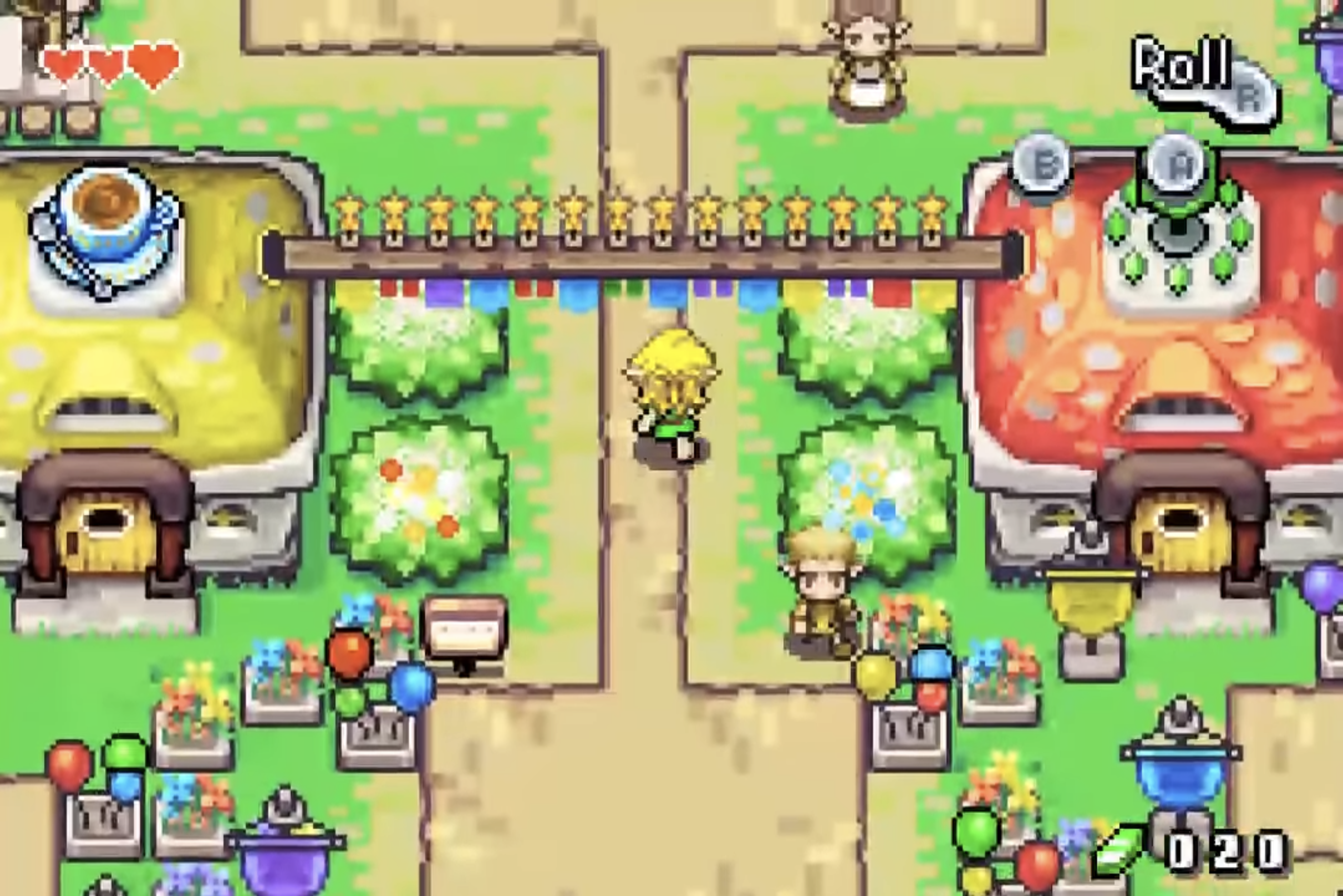
This puzzle-solving density isn’t limited to Mount Crenel, either; it expands outward across the game. When I walked into Minish Cap‘s iteration of Hyrule Town for the first time, I felt a sensation akin to walking into any of its dungeons: I noticed tons of small environmental details indicating that I could interact with them if only I could find the proper way to do it. I saw planks of wood laid across the river or between rooftops, too small for full-size Link to walk on; I saw tiny doors leading into houses. I walked into a bakery and saw a miniature ladder leading up, past the steam-belching oven, into the rafters. At this point in the game, I hadn’t yet gained the ability to shrink, but I knew that once I would, the town would become a dense net of exploratory puzzles just waiting to be solved.
In this way, Minish Cap quietly presents an alternate approach to what was, at the time of its release, the set-in-stone formula of Zelda progression. The 3D games had settled into a comfortable rhythm, with three distinct phases: you explore a vast overworld, get funneled into a town, and follow a progression of events until you reach a dungeon. If there are puzzles leading up to the dungeon, they tend to be lighter, less taxing, and more about combat and hazard avoidance. By comparison, the Mount Crenel sequence is practically as long and varied as the dungeon it leads up to, while a mid-game sequence in Hyrule Town combines a trading quest, overworld exploration, and dungeon-crawling into a discrete segment that blurs the line between those activities into nonexistence. Minish Cap approaches the entire Zelda experience as if it was all a dungeon, packing lateral-thinking challenges into every corner.
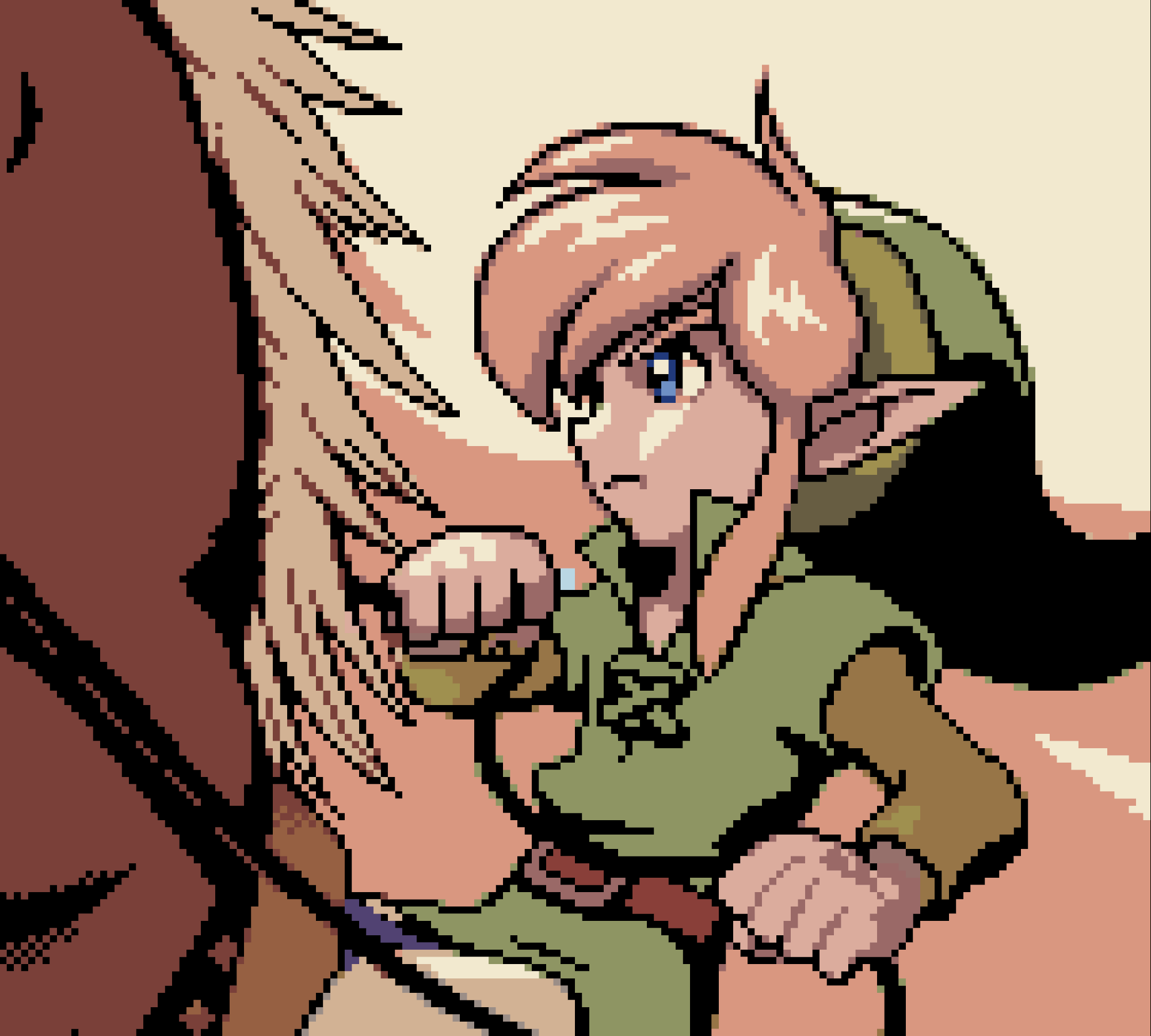
When looked at as part of the broader Zelda lineage, it becomes clear that Minish Cap isn’t unique; it’s a further elaboration on the techniques and ideas established in the previous handheld titles, the brilliant Oracle duology. The two Oracle games – Oracle of Ages and Oracle of Seasons – are a pared-down version of what was originally an ambitious three-game project. Each game in the proposed trilogy was planned to represent one segment of the Triforce, expressing the themes of wisdom, power, and courage through game design. Oracle of Seasons, representing the Triforce of Power, is more combat-focused; and while the proposed third game representing the Triforce of Wisdom was ultimately canceled, Oracle of Ages’ heavy focus on puzzle-solving does seem to carry traces of what that cancelled game was supposed to be.
Moreover, the puzzles in Oracle of Ages are the clear foundation for what Minish Cap would eventually build upon. The lead-up to the Skull Dungeon sends players through two separate dungeon-like sequences – the first to access Symmetry City, and the second to open the path to the dungeon. This second sequence in particular feels like a spiritual precursor to Minish Cap’s Mount Crenel. Both take place as players climb up and down the side of a mountain, using the game’s main item to solve spatial-logic puzzles while fending off enemies, and both sequences are essentially as long as the dungeons to which they lead.
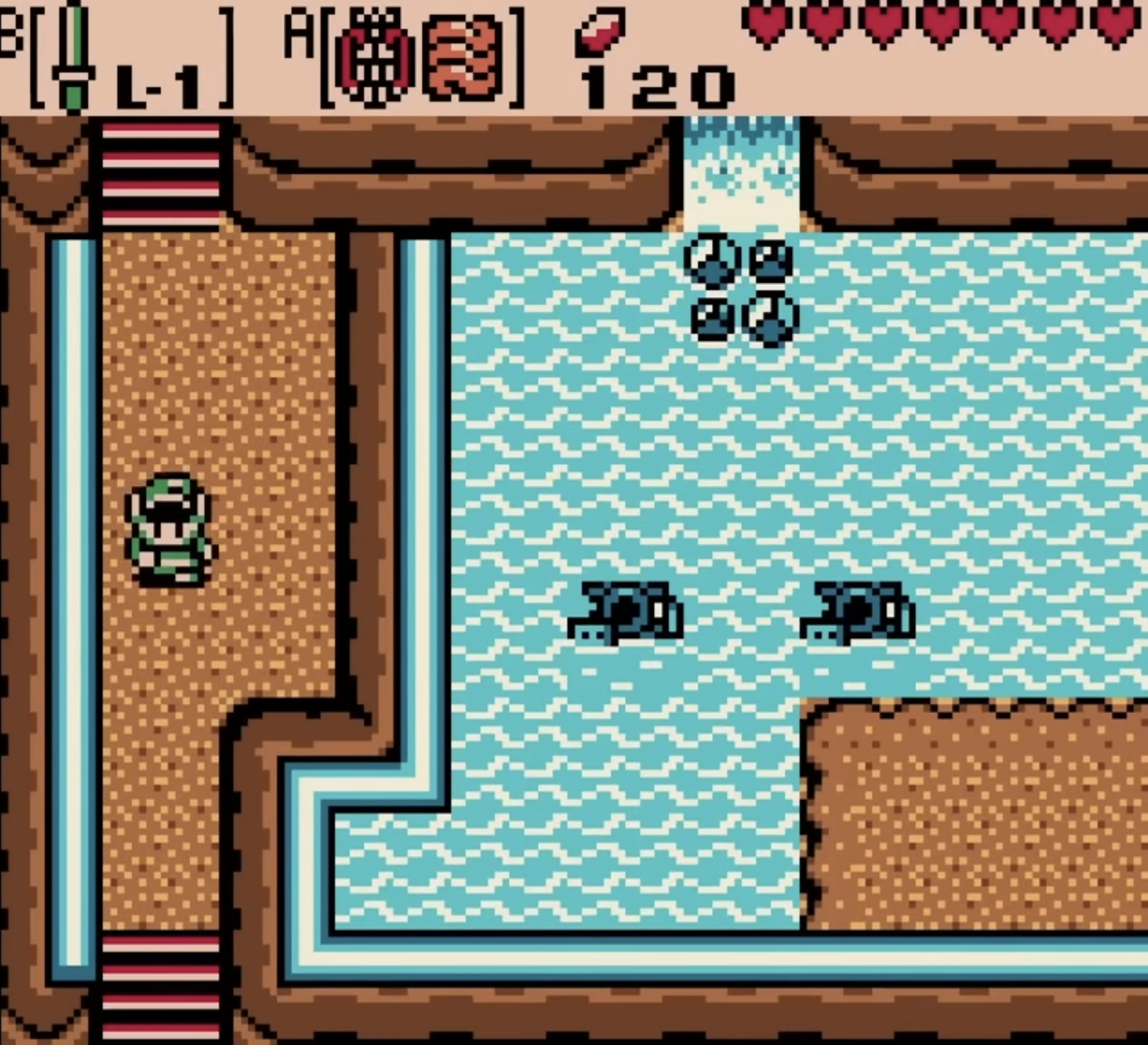
It is no surprise that these patterns repeat across the two games. Both games were directed by Hidemaro Fujibayashi, a developer working for Capcom subsidiary Flagship when Nintendo hired the team to work on the Oracle games. While he originally worked in a more secretarial role, he was eventually promoted to director, and devised the games’ signature password-link system that unlocks new content for players who’ve completed both games.
After the success of those games, he devised Minish Cap as “a ‘mainline,’ traditional 2D Zelda game,” according to a 2004 interview with Nintendo Dream. But in that same interview, Fujibayashi points to the ways that Minish Cap pushed Zelda conventions forward. While discussing the game’s approach to Hyrule Town, Fujibayashi says, “If I could make [Hyrule town] feel like a dungeon itself, I believed that would be something brand new to the Zelda series.” And Eiji Aonuma, the franchise's producer, points to the ways in which the dungeon format is limiting: "The outside world, the field map, can offer more multi-faceted gameplay. But I think the basics of what you do are the same in both... [In Minish Cap,] the overworld map itself act[s] like one big dungeon."
This philosophy – bringing the dungeon out into the world – is the keystone of modern Zelda. After Flagship was dissolved in 2007, Fujibayashi would move to Nintendo to work on more Zelda games, eventually making the jump to 3D with Skyward Sword. And while that game remains divisive among series fans, I have to admit that I’ve always liked it. I love its dungeons, sure – the Ancient Cistern is one of the best in the series – but more than that, I love the way its boundaries between overworld and dungeon are basically nonexistent. The second you land in a new area in Skyward Sword, you are placed on a compact, linear path toward a set goal, with traversal puzzles blocking your way. It is, essentially, a game made entirely of Mount Crenels.
And when that game’s experimentation proved divisive, Fujibayashi changed course for the next Zelda game he’d direct: Breath of the Wild. That boundary-busting open-world adventure was received as a total departure from the constricted exploration that defined Skyward Sword. But, if you look closely, you can see the breadcrumbs linking the two games together. If Skyward Sword and the preceding handheld Zeldas tried to make the overworld more like a dungeon, then Breath of the Wild pulled from the opposite direction, making its dungeons more like the overworld and littering its exploration sequences with miniature challenges.
Now we have the shape of modern Zelda: every Korok seed, every sidequest, every challenging optional boss or exploration sequence itself is a concentrated, dense puzzle, nestled amongst a vast net of similar challenges circling a concrete goal. While I miss the density of the traditional Zelda dungeon, I understand why the games have moved beyond them. In modern Zelda, just as in Minish Cap, all of Hyrule is a dungeon.